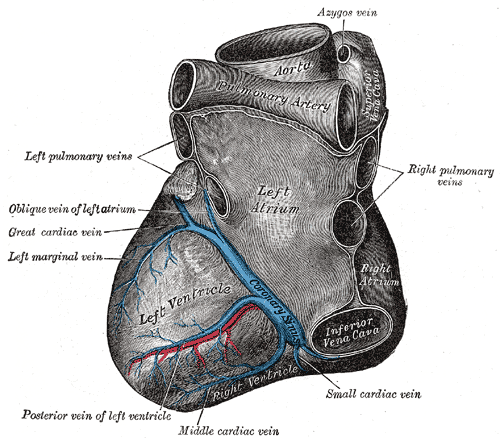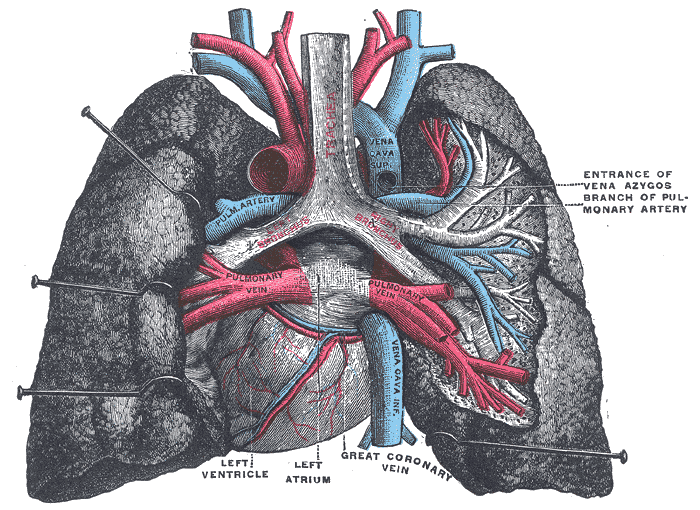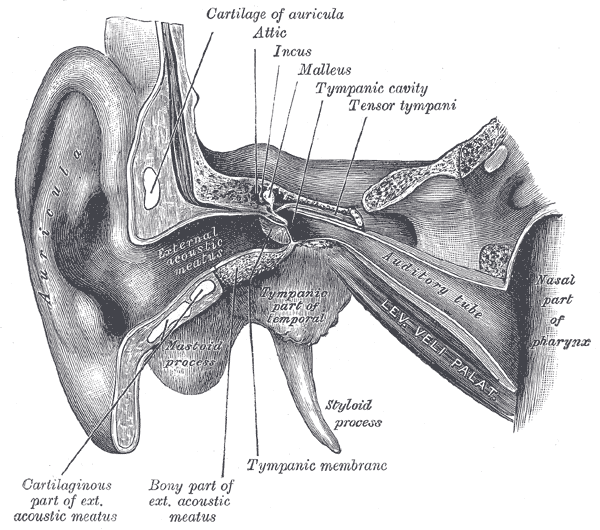Anatomy Tests
Anatomy Animations
McGraw-Hill animations showing elements of anatomy, organ function, cellular biology, diseases, and DNA replication. You must have ‘Flash’ enabled in your browser to view the animations.Diffusion
Enzymes
Osmosis
Sodium Potassium Pump
Lysosomes
Mitosis and Cytokinesis
Fetal Development
Meiosis
Stages of Meiosis
Features of Meiosis
Myofilament Contraction
Sarcomere Contraction
Nerve Impulses
Synaptic Transmission
Blood Sugar Regulation
Hormonal Communication
Hemoglobin Breakdown
Hemolysis
The Heart
HIV Replication
HIV Infection Cycle
Immune Response
Phagocytosis
Respiration
Digestion
Endocytosis and Exocytosis
Proton Pump
Intracellular Receptors Regulating Gene Transcription
Signal Amplification
Feedback Inhibition of Biochemical Pathways
Electron Transport System and ATP Synthesis
Cyclic and Noncyclic Photophosphorylation
Mitosis and Cytokinesis
Bidirectional Replication of DNA
Stages of Meiosis
Hershey and Chase Experiment
Meselson and Stahl Experiment
DNA Replication Fork
How Nucleotides are Added in DNA Replication
Protein Synthesis
How Spliceosomes Process RNA
Early Genetic Engineering Experiment
Constructing Vaccines
Southern Blot
cDNA
Steps in Cloning a Gene
Polymerase Chain Reaction
Microarray
The Ti Plasmid
The Tryptophan Repressor
Combination of Switches – the Lac Operon
Control of Gene Expression in Eukaryotes
Transcription Complex and Enhancers
Integration and Excision of a Plasmid
Mechanism of Transposition
Control of the Cell Cycle
Conjugation with F Plasmid
Thymine Dimers
Tumor Suppressor Genes Blocking Cell Division
Treatment of HIV
HIV Replication
Malaria – Life Cycle of Plasmodium
Sarcomere Shortening
Chemical Synapse
Sodium-Potassium Exchange
Function of the Neuromuscular Junction
Mechanism of Steroid Hormone Action
Mechanism of Thyroxine Action
Action of Epinephrine on a Liver Cell
Cytotoxic T-cell Activity Against Target Cells
Interaction of Antigen Presenting Cells and T-helper Cells
Monoclonal Antibody Production
Spermatogenesis
Anatomy Courses Online
AnatomyBasic Human Anatomy
Human Skeleton and Bones
Muscles
Musculoskeletal Injury Cases
Intro to Circulatory System
Circulatory Diseases
Intro to Respiratory System
Respiratory Diseases
Intro to Endocrine System
Nervous System
Medical Imaging
Gastrointestinal System
Lymphatic System
Renal System
Cell Biology
Genetics
Genetic Medicine
Immunology 1
Immunology 1
Global Health
Clinical Trials
Treating the Flu
Tuberculosis
Functional Organ Systems
The brain is a marvel of nano-engineering and computer science. Beyond the great number of neurons, the synaptic connections form a lattice that is almost incomprehensibly complex. Neurology is still an emerging science, and many discoveries may be made by creative researchers, both in the fields of physical medicine, as well as in psychiatry.
The heart has four valves, namely the mitral, aortic, tricuspid, and pulmonary, that regulate the flow of blood through the heart’s four chambers. Each valve consists of a flap, or leaflet, that regulates the blood flow to adjacent chambers, then snaps shut to prevent blood from flowing backwards. As in an automobile engine, valves can experience leakage, a situation in which valves do not close completely, allowing blood to flow in reverse. A second valve disorder is stenosis, in which the malfunctioning valve limits the volume of blood flow.
Both conditions can significantly reduce the heart’s ability to pump blood. In many cases, heart disease progresses slowly, as the heart compensates for irregularities in blood flow, so symptoms may not seem severe. One may appear symptom-free, yet have serious heart valve disease, requiring immediate hospitalization. In general, irregular valve activity creates abnormal heart sounds, such as murmurs and clicks, that can be heard with a stethoscope. Finally, an echocardiogram may be called for in order to confirm the diagnosis. Further diagnostics can be performed, such as CT-angiography and cardiac MRI.

The lungs have miles of tiny passages, easily clogged by pollutants such as smoke, and other microscopic irritants. Asthma is a chronic lung disease that narrows the airways. In the US, more than 25 million people are known to have asthma, and new research indicates that a chemical compound found in many air fresheners, bathroom cleaners, and deodorizing products, may be harmful to the lungs.
Air first enters your body through your nose or mouth, which wets and warms the air. Conversely, cold, dry air can irritate your lungs. The air then travels through your voice box and down your windpipe, which splits into two bronchial tubes entering the lungs. A thin flap of tissue called the epiglottis covers your windpipe when you swallow, preventing food and drink from entering the air passage.
Except for the mouth and some parts of the nose, all of the airways are covered by cilia, which contain a sticky, mucus coating. The cilia trap germs and other foreign particles that enter your airways when you breathe in. Fine hairs then sweep the particles up to the nose or mouth. From there, they’re swallowed, coughed, or sneezed out of the body.
Your lungs and associated blood vessels deliver oxygen to your body and remove carbon dioxide. Interestingly, the left lung is slightly smaller than the right lung, allowing additional room for your heart. Within the lungs, individual bronchi branch into thousands of thinner tubes called bronchioles. These tubes end in bunches of tiny round air sacs, the alveoli. Each air sac is covered by a mesh of tiny capillaries. The pulmonary artery delivers blood rich in carbon dioxide (lacking in oxygen) to the capillaries that surround the air sacs. Inside, carbon dioxide migrates from the blood back into the air. At the same time, oxygen is absorbed. The oxygen-rich blood then travels to the heart through the pulmonary vein, completing respiration.

The ear depends on coordinated events that transform sound waves into electrical impulses. The auditory nerve transmits these signals to the brain. Initially, sound waves enter the outer ear and traverse the outer ear canal, leading to the eardrum. The eardrum vibrates from the incoming sound waves and sends vibrations to three tiny bones in the middle ear.
These bones couple the sound waves from the air to fluid vibrations in the cochlea of the inner ear. Hair-like sensory cells perched on top of the basilar membrane ride the ripple of fluid thus created. As the hair cells move up and down, microscopic stereocilia sitting on top of the hair cells bump against an overlying structure and bend, which causes pore-like channels at the tips of the stereocilia to open. When that happens, chemicals rush into the cell, sparking an electrical signal. The auditory nerve then carries this signal to the brain, which translates it into a sound that we can recognize and understand.
When exposed to loud noises over an extended period, hearing losses may occur. Over time, sounds become distorted, and it may be difficult to understand other people when they talk. Sometimes exposure to continuous noise causes a temporary hearing loss, but there also may be residual long-term damage. Loud noise exposure also may be responsible for tinnitus, which is perceived as a ringing in the ears or cranium.
Disorders of the Ear
Auditory NeuropathyAuditory Processing Disorder
Ear Infections in Children
Enlarged Vestibular Aqueducts (EVA)
Hearing Loss/Deafness, Sudden
Hearing Loss and Older Adults
Hearing Loss, Noise Induced
Hearing Loss, Ten Ways to Recognize
Ménière’s Disease
Otosclerosis
Pendred Syndrome
Presbycusis
Tinnitus
Usher Syndrome
Vestibular Schwannoma and Neurofibromatosis
Common noise levels (in decibels):
Humming of a refrigerator = 45 decibels
Normal conversation = 60 decibels
Heavy city traffic = 85 decibels
Motorcyle engine = 95 decibels
An MP3 player at maximum volume = 105 decibels
Police siren = 120 decibels
Firecrackers = 150 decibels
Advances in ear replacement surgery:
Biological scientists used 3-D printing of cartilage cells and nano-sized materials to create functional ears that receive radio signals. The experiments demonstrated that it may be possible to create bionic tissues and organs. Scientists used 3-D printing to merge living tissue with an antenna that is able to receive radio signals. In tissue engineering, cells and other biological materials are used to augment or replace deteriorating muscle matter, bone and cartilage. Currently, it’s difficult to create 3-D structures for use in the body, especially organs with complex geometry such as the ear.
Source: National Institutes of Health, www.nih.gov.

Medical Jobs – Listings
Healthcare jobs such as Registered Nurses, LPN’s, LVN’s and related Medical Technicians provide over 15 million jobs, and ten of the 20 fastest growing occupations are healthcare-related. Most healthcare workers have jobs that require less than 4 years of college education, such as health technologists and technicians, medical records, billing and coding, health information technicians, diagnostic medical sonographers, radiologic technologists and technicians, and dental hygienists. As people age they have more medical problems, and hospitals will require more staff. Wages vary by the employer and area of the county. Aside from their salary, most medical jobs include excellent benefits, as well as retirement plans.Source: Nursing Jobs Outlook, Bureau of Labor Statistics.
Nursing Certification
There is a shortage of nurses, and a high-paying job may be found if you are able to graduate, but having chosen to become a nurse, please be aware that the education required is very challenging. Community colleges may offer an Associate of Science in Nursing degree, and some diploma programs award certificates in practical nursing. Nursing training takes between 12 and 18 months based on your ability. Deciding whether to get an associate’s degree or a bachelor’s degree depends on your career goals and budget limitations. Most people do not have the means to attend four straight years of college, and by completing an associate’s degree, you can begin work immediately.After completing your nursing education, you must be licensed by the state in which you’ll be practicing. The state boards of nursing each have their own specific certification criteria. In general, the requirements include completion of a degree in nursing, and board certification by the relevant accrediting body. The two biggest certifying bodies are the American Nurses Credentialing Center (ANCC) and the American Academy of Nurse Practitioners (AANP). The license period varies by individual state, but is usually valid for either two or three years, at which time you’ll need to renew.
Registered nurses (RNs) are not required to be certified in a certain specialty by state law. For example, it is not necessary to be a Certified Medical-Surgical Registered Nurse (CMSRN) to work on a hospital Medical-Surgical (MedSurg) floor, and most MedSurg nurses are not CMSRNs. Certified nurses may earn a higher salary than their non-certified nursing colleagues. In the US and Canada, many nurses become certified in a particular specialty area. There are well over 200 nursing specialties and subspecialties.
| Nursing Jobs: Updated Daily | Starting (up to) |
| Dental Hygienists | $30,430 |
| Diagnostic Medical Sonographers | $36,090 |
| EMT, Paramedics | $29,390 |
| Home Health Aides | $30,100 |
| Licensed Vocational Nurses (LVN) | $54,480 |
| Massage Therapists | $33,000 |
| Medical Assistants | $26,980 |
| Medical Lab Technicians | $30,550 |
| Medical Records | $29,140 |
| Pharmacy Tech | $30,180 |
| Physical Therapist Assistants | $41,410 |
| Psychologists | $50,360 |
| Radiologic Technicians | $52,110 |
| Registered Nurses (RN) | $68,300 |
| Respiratory Therapy Technicians | $39,860 |
| Surgical Technologists | $39,680 |
| Veterinary Assistants | $21,060 |
Tag Cloud
Apple iPad Mini App Design
Computer Security
Job Listings
Free Credit Report
Sales Training
Technical Degree Program
Job Training
Starting a Business
Free Online Courses
Online Career Training
Investment Analysis
Technical Training
Medical Jobs
Financial Services
Jobs Board
Design Software
Employee Benefits
Online Degree Programs
Technical Degree Program
Web Page Design
Credit Score
Career Education
